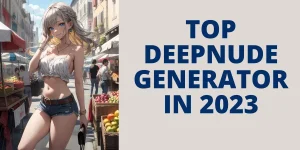Introduction
The advent of artificial intelligence (AI) marks a transformative era in the world of stock photography. This technology is revolutionizing how photographers, agencies, and consumers interact with stock imagery. From automating tasks to creating entirely new compositions, AI is redefining the boundaries of creativity and efficiency.
The Evolution of AI in Stock Photography
Automating Routine Tasks
AI excels at streamlining repetitive tasks. For stock photography, this means faster and more accurate sorting, tagging, and categorizing of images. AI algorithms can analyze thousands of photos, identifying subjects, colors, and emotions, thus simplifying the search process for users.
Enhancing Image Quality
AI tools enhance image resolution and quality, breathing new life into older or lower-quality images. This enhancement includes upscaling resolution, improving lighting and color balance, and even restoring damaged or degraded photos.
AI-Driven Photography Creation
Tools like deep nide are at the forefront of AI-driven photography creation. These tools generate high-quality stock images from textual descriptions, offering limitless possibilities in terms of themes, styles, and compositions. This innovation significantly reduces the time and cost associated with traditional photography. For example, a digital landscape that might take hours to capture in the real world can be created in minutes, at a fraction of the cost.
Impact on the Stock Photography Market
Cost Efficiency
AI reduces the costs associated with stock photography in multiple ways. Traditional photo shoots often involve expenses like travel, models, and props. AI-generated images eliminate many of these costs, offering a more budget-friendly alternative. For instance, creating a complex scene via AI might cost as little as $50, compared to hundreds or thousands of dollars for a traditional shoot.
Expanding Creative Horizons
AI enables the creation of images that might be impossible or impractical to capture through traditional photography. This includes fantastical scenes, abstract concepts, or futuristic settings. The speed and ease of AI also encourage experimentation, allowing photographers and clients to explore more creative ideas without the constraints of time and budget.
Quality and Resolution
AI-generated images can match, and sometimes surpass, the resolution and quality of traditional photographs. High-resolution images are crucial for professional use, and AI can consistently deliver images with resolutions suitable for large-scale prints and high-definition digital platforms.
Challenges and Considerations
Ethical and Legal Issues
The rise of AI in stock photography brings ethical and legal considerations, particularly around copyright and the authenticity of AI-generated images. There's a need for clear guidelines and regulations to navigate these challenges responsibly.
Balancing AI and Human Creativity
While AI offers incredible efficiency and possibilities, it's important to balance technological innovation with human creativity and intuition. The unique perspective and emotional depth that human photographers bring to their work remain irreplaceable.
Conclusion
AI is undoubtedly transforming the world of stock photography, offering unprecedented levels of efficiency, creativity, and cost-effectiveness. As this technology continues to evolve, it will further reshape the landscape of visual media, opening up new horizons for creators and consumers alike.

